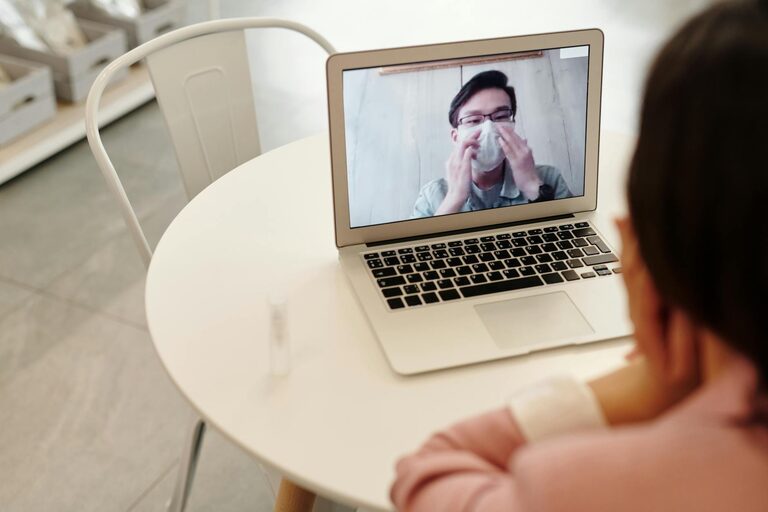In today’s digital world, many of us spend a significant amount of time in front of screens—whether it’s computers, tablets, smartphones, or TVs. While screens make life easier and more entertaining, prolonged screen time can cause eye discomfort and strain. Knowing how to protect your eyes during screen time is important for maintaining good vision and preventing discomfort.
This blog post will guide you through simple, effective techniques to safeguard your eyes, reduce fatigue, and enjoy your screen use more comfortably.
Understanding Digital Eye Strain
Digital eye strain, also known as computer vision syndrome, is a group of eye and vision-related problems resulting from prolonged use of screens. Symptoms include:
– Dry or irritated eyes
– Blurred or double vision
– Headaches
– Neck and shoulder pain
– Difficulty focusing
These symptoms usually occur because we tend to blink less when staring at screens, and the blue light from digital devices can cause discomfort.
Tips to Protect Your Eyes During Screen Time
Here are some practical steps you can take to minimize eye strain and maintain eye health:
1. Follow the 20-20-20 Rule
Every 20 minutes, take a break and look at something 20 feet away for at least 20 seconds. This simple habit helps relax the focusing muscles in your eyes and reduces fatigue.
2. Adjust Your Screen Position
Place your screen about an arm’s length away (20-28 inches) and slightly below eye level. This reduces the strain on your eyes and neck muscles.
3. Optimize Lighting and Reduce Glare
Use proper lighting to avoid harsh reflections on the screen. Position your screen to avoid glare from windows or overhead lights. Consider using an anti-glare screen protector if needed.
4. Blink More Often
Consciously blink to keep your eyes moist, especially when reading or working on the computer. Blinking helps prevent dryness and irritation.
5. Use Artificial Tears
If your eyes feel dry, over-the-counter lubricating eye drops can help maintain moisture. Always select preservative-free options to avoid irritation.
6. Adjust Display Settings
Modify your screen’s brightness, contrast, and font size for comfortable viewing. Many devices also have a “night mode” or “blue light filter” that reduces blue light exposure, which may help reduce eye strain.
7. Take Regular Breaks
Besides the 20-20-20 rule, take longer breaks throughout your day. Stand up, stretch, and let your eyes rest by focusing on distant objects.
8. Maintain Good Posture
Sitting with proper posture can prevent neck and shoulder pain that often accompanies eye strain. Ensure your back is supported, feet flat on the floor, and wrists straight when using a keyboard or mouse.
9. Get Regular Eye Exams
Regular visits to an eye care professional help detect any vision problems early. Inform your eye doctor about your screen use habits so they can suggest appropriate solutions like special lenses if needed.
Additional Tools and Techniques
Blue Light Glasses
Some people find blue light blocking glasses helpful for reducing eye discomfort during extended screen use. While scientific findings are mixed, these glasses may reduce glare and improve comfort for some users.
Screen Filters and Software
Apps like f.lux or built-in settings on many devices adjust color temperature according to the time of day to reduce blue light exposure. Using these tools can make screen viewing easier on the eyes, especially in the evening.
Creating an Eye-Friendly Work Environment
When setting up your workspace, consider the following to protect your eyes:
– Use adjustable chairs and desks to maintain ergonomic positioning.
– Place monitors to avoid reflection and glare.
– Use document holders to keep reference materials at eye level.
– Ensure adequate ambient lighting without harsh contrasts.
Healthy Habits Beyond Screen Time
Eye health benefits from an overall healthy lifestyle:
– Eat a balanced diet rich in leafy greens, carrots, and omega-3 fatty acids.
– Stay hydrated to keep your eyes moist.
– Get sufficient sleep to help your eyes rest and recover.
– Exercise regularly to promote good blood circulation.
Summary
Protecting your eyes during screen time is achievable with simple habits and adjustments. The key takeaways include remembering to take regular breaks, maintaining proper screen distance and lighting, blinking frequently, and seeking professional eye care when needed. By incorporating these strategies, you’ll reduce eye strain and keep your eyes comfortable and healthy in our screen-driven world.
Remember: your eyes work hard for you—give them the care they deserve!



